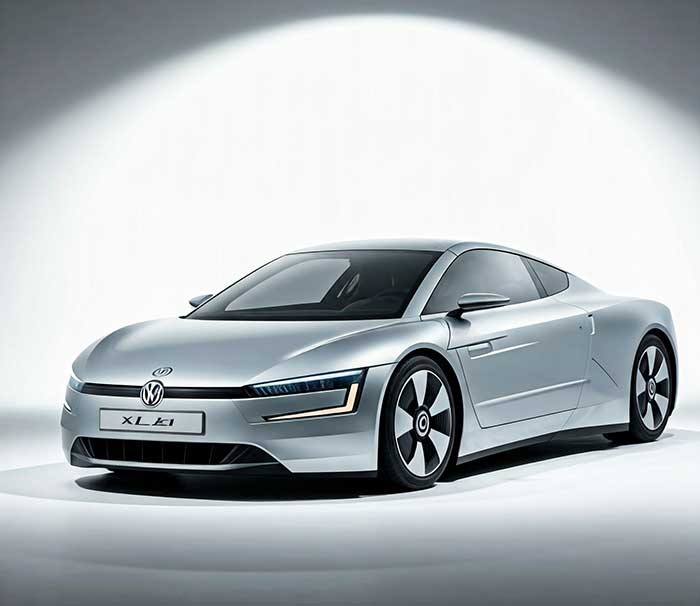The Volkswagen XL1 is a testament to the ingenuity and forward-thinking approach of automotive engineering. This two-seater plug-in hybrid is not just a car; it’s a glimpse into the future of sustainable transportation. Let’s delve into the specifications and fuel efficiency of this remarkable vehicle.
Specifications
The Volkswagen XL1 is a marvel of lightweight construction and aerodynamic design. Here are some key specifications:
- Engine: The XL1 is powered by an 800 cc TDI twin-cylinder turbo-diesel engine, producing 35 kW (48 PS; 47 hp).
- Electric Motor: It also features a 20 kW (27 PS; 27 bhp) electric motor, making it a parallel hybrid.
- Battery: The car is equipped with a 5.5 kWh lithium-ion battery, providing an all-electric range of 50 kilometers (31 miles).
- Dimensions: The XL1 measures 3,888 mm (153.1 in) in length, 1,666 mm (65.6 in) in width, and 1,153 mm (45.4 in) in height.
- Weight: With a curb weight of just 795 kg (1,753 lb), the XL1 is incredibly light.
- Transmission: The car features a 7-speed dual-clutch transmission (DSG).
- Top Speed: The XL1 can reach a top speed of 160 km/h (99 mph).
- Acceleration: It can accelerate from 0 to 100 km/h in just 12.7 seconds.
- Fuel Tank Capacity: The XL1 has a fuel tank capacity of 2.6 gallons.
Fuel Efficiency
The Volkswagen XL1 is renowned for its exceptional fuel efficiency. Here are some highlights:
- Fuel Consumption: The XL1 boasts a combined fuel consumption of just 0.9 liters per 100 kilometers (261 miles per gallon).
- Diesel Mode: Without using electric power, the XL1 can travel 100 kilometers on just 2 liters of diesel.
- Electric Mode: With a fully charged battery, the XL1 can travel up to 50 kilometers on electric power alone.
- Emissions: The XL1 produces only 21 grams of CO2 per kilometer, making it one of the cleanest cars on the road.
Design and Features
The XL1’s design is a blend of aesthetics and functionality. It features a streamlined body with a drag coefficient (Cd) of 0.159, which is significantly lower than typical cars1. The car uses lightweight materials such as carbon fiber for the body and magnesium-alloy for the subframe. The interior is designed for comfort and practicality, with slightly offset side-by-side seating and wing doors for easy access2.
Production and Availability
The Volkswagen XL1 was produced in a limited run of 250 units between 2013 and 2016. It was available only in Europe, with pricing starting at €111,000 (~£119,000)1. The XL1 was released to retail customers in Germany in June 2014.
Conclusion
The Volkswagen XL1 is a groundbreaking vehicle that showcases the potential of hybrid technology and sustainable design. Its exceptional fuel efficiency, lightweight construction, and innovative features make it a pioneer in the quest for greener transportation. While it may have been a limited production model, the XL1 serves as an inspiration for future advancements in automotive engineering.
